Children’s early math achievement is very important to later math achievements. Number competency forms the foundation of the kindergarten math curricula. This critical period means it is best for children to gain proficiency in the core kindergarten math areas associated with number competencies. If children miss out, then the desired math outcomes will be delayed or not achieved and gaps in achievements will be evident. Building children’s number sense is critical to their success in science, technology, engineering and math (STEM).
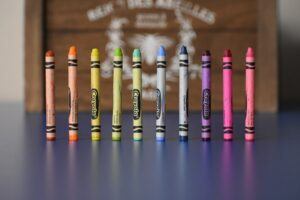
Joshua Eckstein
What is Number Sense?
Number sense is a conceptual framework relating to specific skills about number information that children need to develop in order to gain mathematical fluency. Number sense compromises three key areas these are, number knowledge (number recognition, counting, number meaning), number relationships (number magnitude) and number operations (referents for numbers and quantities).
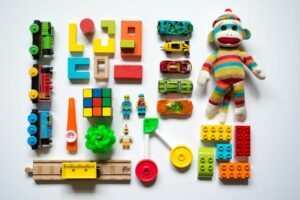
Vanessa Bucceri
Early number sense follows a developmental trajectory as young children in preschool to kindergarten move from core knowledge of numbers to number relations to number operations. Thus, having a knowledge of the number system, to compose and decompose numbers with an understanding of number relations. Kindergarten children develop and build core number competencies in math such as algebra (through understanding patterns, sorting and categorizing), geometry (understanding spatial relationships and properties of two –dimensional and three – dimensional shapes), measurement (knowledge of order, making comparisons and understanding of measurable attributes) and data analysis (interpreting and conveying information from data). Foundational number sense in kindergarten is therefore a strong predictor of math achievement in elementary school.
Why is it Important for My Child to Develop Number Sense?
Almost all children develop a certain level of number sense before they start kindergarten. However, it is observed that, individual difference exists as some children enter kindergarten having stronger number sense than others. Research shows that significant percentage of preschool and kindergarten programs spend little time on early math, instructional quality is poor and children enter kindergarten with few number experiences and miss out on early number sense skills. Parents and families need to take note of this, and be knowledgeable in order to aid children at home in developing number sense and to ensure a strong foundation in math. Developing a love for math in young children begins with building an understanding of numbers.
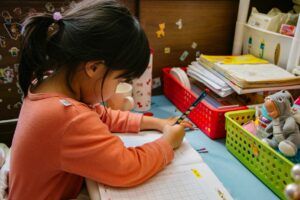
Jason Sung
Children with strong number sense have the understanding of numbers, their relationships and operations. These children are able to use numbers confidently, they talk and visualize numbers and relationships, they use numbers in real life situations, connect numbers to their everyday life and develop strategies to solve problems. Number sense is used as a tool for connecting children in learning conventional mathematics.
How do I Assist my Child in Developing Number Sense?
We have established that number sense includes children’s skills related to counting, recognizing number patterns, comparing numbers, estimating and understanding number operations. These skills are developed gradually over time with practice. Giving children the opportunity and tools to manipulate numbers build their number sense. Numbers are everywhere and are used in everyday situations therefore, parents should use this as an opportunity to develop children’s interest in numbers.
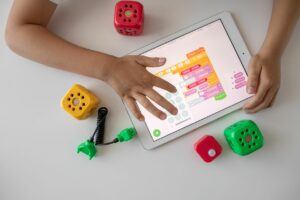
Robo Wunderkind
From very early we sing songs to children, some of these songs relate to counting; resulting in children developing basic counting strategy and learn the names of numbers. Children then need to identify or recognize numbers. After which, they need the understanding of number relationships; for example, they need to know that two comes before three and four comes after three when counting. Children need to understand the quantity of a number that three objects can be represented by the numeral 3. In kindergarten children need to understand place value and operations.
Strategies:
Teaching children to count is best done using movable objects such as blocks, counters and toys. I am suggesting that these tools be very colorful and made of diverse materials, shapes and sizes this will aid in developing young children’s interest in manipulating them. Use these tools to aid children in forming sets and subsets of numbers. Thus, you help them understand the relationships between amounts. Let them use number symbols and learn to identify and write them. So, they can match number symbols to quantity. For example, let them take to you three blocks representing numeral 3. Stories, games and activities are useful in developing children’s number sense and math in general. Here are some activities you may engage your children in:
- Let children talk about math and explain their thinking (Can you say which number comes before eight and after eight? Can you count up to 10? Show me how many ways to make 10?
- Do counting activities (counting by ones and counting on, skip counting, finger counting, Forward Number Word Sequence (FNWS) and Backward Number Word Sequence)
- Practice number relations: ordering numbers (order numbers in a list: 1st, 2nd, 3rd; Making number comparisons: (11 is greater than 12, and three is half of six)
- Do number quantities (understanding concepts such more and less, and larger and smaller, spatial quantities, quantities of time and distance)
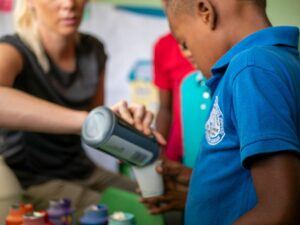
Tyler Lagalo
5. Make estimates, mental calculation, predictions –use candy jar
6. Learn parts and wholes (use puzzles, allow children to make sets and subsets for example six can be grouped: three and three, four and two, five and three.
7. Learn number operations- (do place value activities, use number lines, dots cards, manipulatives, learn symbols +. -, =)
8. Engage in problem solving (Kate picked 5 apples. Kyle picked 2. How many apples did they pick in all?”)
9. Use multiple strategies so that children may learn number sense skills. Please note, children tend to choose strategy they prefer. These early math strategies aid in developing advanced math skills.
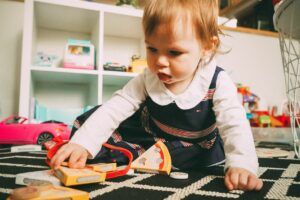
Troy T
Take Note of How Your Child is Progressing
Observing and documenting your child’s response and progress when you engage them in number sense activities are critical to their math success. Please note, if you feel your child is having challenges in learning early math skills, then; you may take your child to your family physician and discuss the matter. Children having challenges learning early math skills are usually screen for math delay. The earlier this is identified the sooner intervention can be done.
Disclosure-This page has affiliate or referral links. As an Amazon Associate I earn from qualifying purchases. This means I receive a small commission if you decide to click through and buy anything. This is at no extra cost to you but helps me to maintain my website. The information in this post is based on research and professional experience. I am not paid for my opinions, suggestions or recommendations. I take the time to research the resources and make them available to you. I never recommend poor-quality products or create false reviews for sales. You are free to make your own decisions when purchasing. Full Disclosure
Top Recommended Books for Teaching Number Sense
Young children enjoy books. Parents, families and teachers may develop children’s interest in building number sense through literature. Here are my top three recommended books to assist in in building children’s number sense. You may click on the book titles numbers 1-3 and purchase on Amazon.
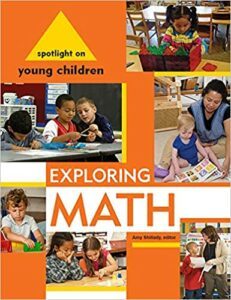
This book assist teachers of young children and parents how to help young children up to two years old, develop, construct, use, and reflect on their mathematical understandings. Articles offer ways to provide in-depth, engaging learning experiences focusing on key math concept areas: number and operations, geometry, measurement, and data analysis. The book provides a comprehensive resource list and a professional development guide with questions and activities to help readers reflect on current practices and incorporate new ones.
2. Count on Pablo (Math Matters ®)
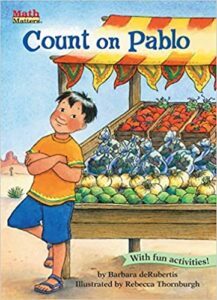
Amazon
Pablo is excited about helping his grandmother sell vegetables at the farmer’s market. But no one comes to buy. Pablo’s solution is clever – and delicious! For children ages 5- 7 years to assisting in number sense and problem solving.
3. Clothesline Math: The Master Number Sense Maker, Make Math Fun for K-12 Students with Hands-On Activities to Teach Number Sense (Professional Resources)
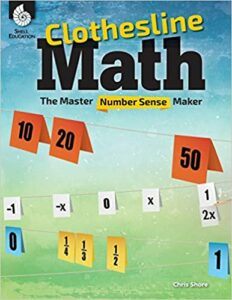
Amazon
This must-have resource provides the theoretical groundwork for teaching number sense. Authored by Chris Shore, this book empowers teachers with the pedagogy, lessons, and detailed instructions to help them implement Clothesline Math in K-12 classrooms. Detailed, useful tips for facilitating the ensuing mathematical discourse are also included. At the elementary level, the hands-on lessons cover important math topics including whole numbers, place value, fractions, order of operations, algebraic reasoning, variables, and more. Implement Clothesline Math at the secondary level and provide students with hands-on learning and activities that teach advanced math topics including geometry, algebra, statistics, trigonometry, and pre-calculus. Aligned to state and national standards, this helpful resource will get students excited about learning math as they engage in meaningful discourse.
Take-A-Ways
This post was written to support parents, families and teachers to gain meaningful insights into how children’s number sense is developed for learning math and ultimately succeeding in STEM. Number sense is a conceptual framework relating to specific skills about number information that children need to develop in order to understand, interpret and solve mathematical problems Children with strong number sense have the understanding of numbers, their relationships and operations. These children are able to use numbers confidently, they talk and visualize numbers and relationships, they use numbers in real life situations, connect numbers to their everyday life and develop strategies to solve problems.
It is my sincere desire that this post was relevant and assisted you to support your children. Please feel free to leave your opinions, ideas, comments, and questions relating to this post. I am more than happy to respond to you in a timely manner.
You are free to share or like this page on any of the above social network. Click on them (Twitter, Facebook, Pinterest) on the top right of the page.
I welcome you sharing your children’s experiences using the suggested resources. Thank you for stopping by and have fun engaging your children!
Tracy-Ann Morgan-Smith, PhD, JP

Reference
Morgan-Smith, T. (2019). A phenomenological study of jamaican kindergarten teachers’ perception and attitude to teaching mathematics (Order No. 27539700) ProQuest Dissertations & Theses Global. (2307477072). Retrieved from http://search.proquest.com.proxy1.ncu.edu/docview/2307477072?accountid=28180
